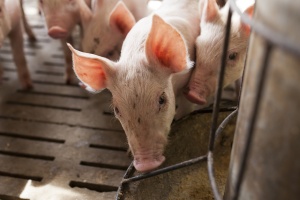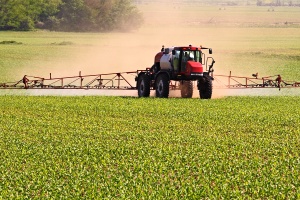Grass-Fed Beef and Other Label Definitions: What They Mean for Cattle and You
In my ongoing attempt to peel away each layer of the onion and better understand our modern food system, I recently toured a large beef processing plant in Illinois with Illinois Farm Families. I went with local dietitians and farmers and discussed our experiences, thoughts and questions about beef, including the meaning of grass-fed beef.
As the conversation flowed, opinions were offered and knowledge was shared. And it really got my wheels turning. Beef and beef labeling is often misunderstood and possibly even a little deceiving, leaving consumers totally confused about what the best choice is for them. I knew I needed to take a deeper dive and explore what these labels really mean, not just for the cattle but also for the consumer.

I spoke with industry experts, researched dozens of articles and read up on regulations, and this is what I learned:
Grass-Fed Beef Definition
We have all certainly heard this term and seen this label before. Even though most cattle are grass-fed at some point in their lives, the food label “Grass-Fed Beef” should inform the consumer that the cattle were fed grass or forage after weaning until they were harvested. It does not distinguish where the grass came from or how they were fed. Cattle may graze on pasture or be fed in lots. Depending on the location and time of year, they may graze during parts of the year and get fed harvested forage during the colder months.
I learned that some people in the cattle industry think this definition of “Grass-Fed Beef” is actually a little misleading. “All cows are grass-fed,” shared Alan, a local farmer on the tour. In his opinion, this definition really describes “grass-fed and grass-finished” beef. For similar reasons, you may see the “100% Grass-Fed” label on beef as well.

The label “Grass-Fed” is overseen by FSIS, the regulatory labeling arm of the USDA that oversees animal-raising claims. Companies that use this label or claim are to provide documentation to support that the label is accurate. The USDA does not “certify” grass-fed beef, so many farms go uninspected. If a farm wants to be audited, inspected and certified, they must do so through a third-party organization like American Grassfed, Animal Welfare Approved or Global Animal Partnership.
Grass-Finished Beef Definition
Many consumers think grass-finished means “grass-fed and grass-finished;” however, unless indicated as such, that may not be the case. These animals may actually be fed grain during the growing phase and then finished on grass.
Grain-Fed Beef Definition
This is also called “conventional,” as 80% of all beef in the U.S. is finished on a grain-based diet. Most cattle are put on pasture or fed forage for four to six months after weaning and then finished on a grain-based diet for the last five months of life to increase weight and beef yield. The cattle generally reach their target weight sooner than their grass-fed counterparts. This beef also tends to be higher in fat with more marbling and, therefore, is more likely to reach the Choice or Prime standard.
Organic Beef Definition
Organic beef can either be grass-fed or grain-fed. And in fact, two-thirds of all the organic beef in the U.S. is fed grain. “Organic” is a USDA certification that can be applied to beef consuming either diet, as long as they are grown following organic guidelines. The beef is not allowed to be given antibiotics or growth hormones and is to be fed grain or forage that is 100% organic, not treated with synthetic pesticides. The beef processors must also be certified organic.
I hope this information brings some clarity as you stroll through the market and decipher which beef product is best for you. Learn more about commonly used labels on beef.










0 Comments